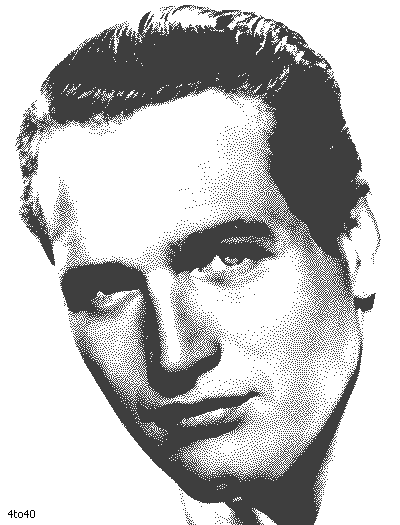 Paul Newman — Paul Leonard Newman was an American actor, film director, entrepreneur, humanitarian and auto racing enthusiast. He won numerous awards, including an Academy Award, two Golden Globe Awards, a Screen Actors Guild Award, a Cannes Film Festival Award, an Emmy award, and many honorary awards. He also won several national championships as a driver in Sports Car Club of America road racing and his race teams won several championships in open wheel IndyCar racing.
Paul Newman — Paul Leonard Newman was an American actor, film director, entrepreneur, humanitarian and auto racing enthusiast. He won numerous awards, including an Academy Award, two Golden Globe Awards, a Screen Actors Guild Award, a Cannes Film Festival Award, an Emmy award, and many honorary awards. He also won several national championships as a driver in Sports Car Club of America road racing and his race teams won several championships in open wheel IndyCar racing.
Newman was a co-founder of Newman’s Own, a food company from which Newman donated all post-tax profits and royalties to charity. As of May 2007, these donations had exceeded US$220 million.
In a business where public scandal and bad-boy behavior are the rule rather than the exception, Paul Newman is as much a hero offscreen as on. A blue-eyed matinee idol whose career has successfully spanned five decades, he is also a prominent social activist, a major proponent of actors’ creative rights and a noted philanthropist. Born January 26, 1925 in Cleveland, Ohio, Newman served in World War II prior to attending Kenyon College on an athletic scholarship; when an injury ended his sports career, he turned to drama, joining a summer stock company in Wisconsin. After relocating to Illinois in 1947, he married actress Jacqueline Witte, and following the death of his father took over the family’s sporting-goods store. Newman quickly grew restless, however, and after selling his interest in the store to his brother, he enrolled at the Yale School of Drama. During a break from classes he travelled to New York City where he won a role in the CBS television series The Aldrich Family. A number of other TV performances followed, and in 1952 Newman was accepted by the Actors’ Studio, making his Broadway debut a year later in Picnic, where he was spotted by Warner Bros. executives.
Upon Newman’s arrival in Hollywood, media buzz tagged him as “the new Brando.” However, after making his screen debut in the disastrous epic The Silver Chalice, he became the victim of scathing reviews, although Warners added on another two years to his contract after he returned to Broadway to star in The Desperate Hours. Back in Hollywood, he starred in The Rack. Again reviews were poor, and the picture was quickly pulled from circulation. Newman’s third film, the charming Somebody Up There Likes Me, in which he portrayed boxer Rocky Graziano, was both a commercial and critical success, with rave reviews for his performance. His next film of note was 1958’s The Long Hot Summer, an acclaimed adaptation of a pair of William Faulkner short stories; among his co-stars was Joanne Woodward, who soon became his second wife. After next appearing as Billy the Kid in Arthur Penn’s underrated The Left-Handed Gun, Newman starred opposite Elizabeth Taylor in Cat on a Hot Tin Roof, scoring his first true box-office smash as well as his first Academy Award nomination.
After appearing with Joanne Woodward in Rally ‘Round the Flag, Boys! — the couple would frequently team onscreen throughout their careers — Newman travelled back to Broadway to star in Tennessee Williams’ Sweet Bird of Youth. Upon his return to the West Coast, he bought himself out of his Warner Bros. contract before starring in the 1960 smash From the Terrace. Exodus, another major hit, quickly followed. While by now a major star, the true depths of Newman’s acting abilities had yet to be fully explored; that all changed with Robert Rossen’s 1961 classic The Hustler, in which he essayed one of his most memorable performances as pool shark “Fast” Eddie Felson, gaining a second Oscar nomination. His third nod came for 1963’s Hud, which cast him as an amoral Texas rancher. While a handful of creative and financial disappointments followed, including 1964’s The Outrage and 1965’s Lady L, 1966’s Alfred Hitchcock-helmed Torn Curtain marked a return to form, as did the thriller Harper.
For 1967’s superb chain-gang drama Cool Hand Luke, Newman scored a fourth Academy Award nomination, but again went home empty-handed. The following year he made his directorial debut with the Joanne Woodward vehicle Rachel Rachel, scoring “Best Director” honors from the New York critics as well as an Oscar nomination for “Best Picture.” The couple next appeared onscreen together in 1969’s Winning, which cast Newman as a professional auto racer; the motor sport remained a preoccupation in his real life as well, and he was the most prominent of the many celebrities who began racing as a hobby. He then starred with Robert Redford in 1969’s Butch Cassidy and the Sundance Kid, which went on to become the highest-grossing western in movie history. It was followed by 1971’s W.U.S.A., a deeply political film reflecting Newman’s strong commitment to social activism; in addition to being among Hollywood’s most vocal supporters of the civil rights movement, in 1968 he and Woodward made headlines by campaigning full time for Democratic Presidential candidate Eugene McCarthy.
After directing and starring in 1971’s Sometimes a Great Notion, Newman announced the formation of First Artists, a production company co-founded by Barbra Streisand and Steve McQueen. Modeled after the success of United Artists, it was created to offer performers the opportunity to produce their own projects. Newman’s first film for First Artists’ was 1972’s Pocket Money, followed by another directorial effort, The Effect of Gamma Rays on Man-in-the-Moon Marigolds. After a pair of back-to-back efforts under director John Huston, 1972’s The Life and Times of Judge Roy Bean and the next year’s The Mackintosh Man, Newman reunited with Redford in The Sting, another triumph which won the 1973 “Best Picture” Oscar. He next appeared in the star-studded disaster epic The Towering Inferno, followed by 1975’s The Drowning Pool, a sequel to Harper. His next major success was the 1977 sports spoof Slap Shot, which went on to become a cult classic.
A string of disappointments followed, including Robert Altman’s self-indulgent 1979 effort Quintet. The 1981 Absence of Malice, however, was a success, and for 1982’s courtroom drama The Verdict Newman notched his fifth “Best Actor” nomination. He finally won the Oscar on his sixth attempt, reprising the role of Eddie Felson in 1986’s The Color of Money, Martin Scorsese’s sequel to The Hustler. After starring in two 1989 films, Blaze and Fat Man and Little Boy, Newman began appearing onscreen less and less. In 1991, he and Joanne Woodward starred as the titular Mr. and Mrs. Bridge, and three years later he earned yet another Academy Award nomination for his superb performance in Robert Benton’s slice-of-life tale Nobody’s Fool. His films since then have been fairly sparse and of mixed quality, with Joel Coen’s and Ethan Coen’s The Hudsucker Proxy (1994) being at the higher end of the spectrum and the Kevin Costner vehicle Message in a Bottle (1999) resting near the bottom. Newman again graced screens in 2000 with Where the Money Is, a comedy that cast him as a famous bank robber who fakes a stroke to get out of prison.
Still, despite his movement away from Hollywood, Newman has remained a prominent public figure through his extensive charitable work; he created the Scott Newman Foundation after the drug-related death of his son and later marketed a series of gourmet foodstuffs under the umbrella name Newman’s Own, with all profits going to support his Hole-in-the-Wall Gang project for children suffering from cancer.
 Kids Portal For Parents India Kids Network
Kids Portal For Parents India Kids Network






